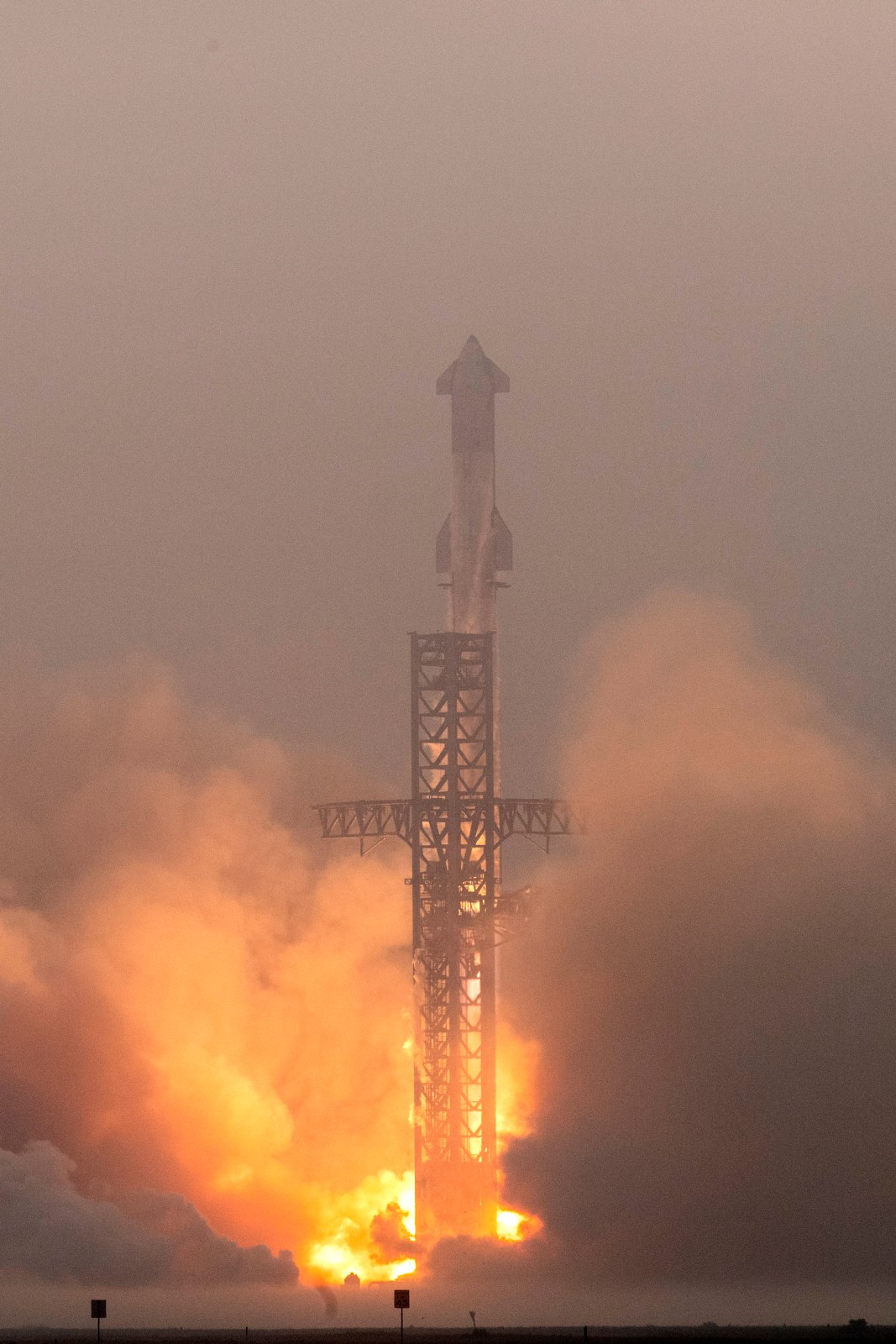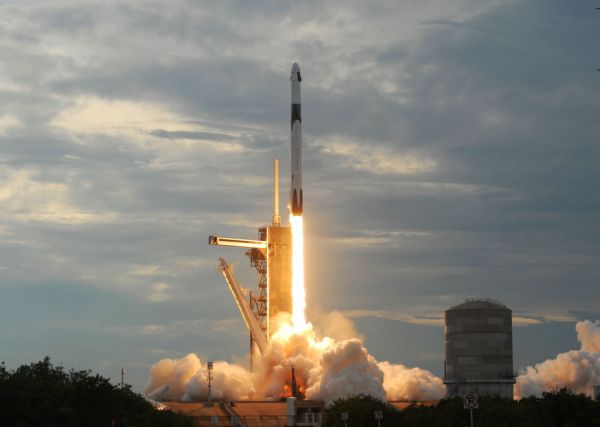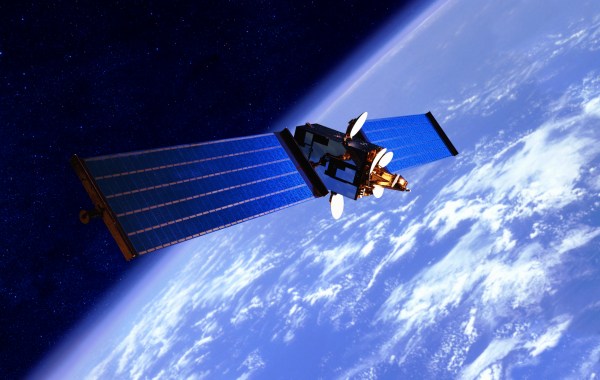Happy Monday! One of your Morning Dispatchers has received some flak during recent Dispatch editorial meetings for wearing Phillies gear—but we think we can all celebrate the team representing America’s birthplace winning their first-ever international game in front of a British crowd in London on Saturday.
Quick Hits: Today’s Top Stories
- A joint operation by the Israel Defense Forces (IDF), the Israeli police, and the Shin Bet rescued four hostages held by Hamas in Nuseirat, a section of central Gaza, on Saturday. Noa Argamani, 26, Almog Meir Jan, 22, Andrey Kozlov, 27, and Shlomi Ziv, 41, were all rescued alive and in good medical condition in a complex daytime operation after Hamas abducted them from the Nova music festival on October 7. The hostages were held in two separate residential buildings, and three of the hostages were held in the home of Abdallah Aljamal, who previously served as a spokesman for the Hamas-run labor ministry in Gaza and wrote a column for Qatari-owned news outlet Al Jazeera in 2019. The IDF and the hostages came under fire from Hamas while trying to flee the area, and Israeli officials said Hamas fired from positions filled with civilians. According to the IDF, the fighting killed or wounded approximately 100 people, including combatants and civilians, and an Israeli special forces commander died as a result of injuries sustained during the operation. The Hamas-run Gaza Health Ministry claimed 274 Palestinians were killed.
- Benny Gantz, an Israeli war cabinet member and former defense minister, on Sunday pulled his centrist National Unity party out of the emergency government established in the wake of Hamas’ October 7 attacks. “[Israeli Prime Minister Benjamin] Netanyahu prevents us from moving forward to a real victory,” Gantz said in a Sunday speech—which was delayed a day by the hostage rescue. “I call on Netanyahu: Set an agreed election date. Don’t let our people be torn apart.” Gantz’s resignation followed an ultimatum he delivered to Netanyahu last month, calling on the premier to release a plan for ending the war with Hamas and the future of Gaza. Netanyahu made an unsuccessful appeal to Gantz over the weekend, tweeting that “this is the time for unity and not for division” and that “we must remain united within ourselves in the face of the great tasks before us.” That said, Gantz’s exit doesn’t topple the government, with Netanyahu and his pre-war coalition still holding 64 out of the 120 seats in the Knesset. Some of the more right-wing members of Netanyahu’s coalition—including National Security Minister Itamar Ben Gvir—have already requested a larger role in the government following Gantz’s departure.
- The U.S. aid pier in Gaza resumed operations on Saturday after undergoing repairs—which began after only a week in use—for damage sustained during rough seas late last month. The IDF said Saturday that Israeli forces were securing the coast around the pier and U.S. Central Command said 492 tons of humanitarian aid was delivered on Saturday.
- Early projections in European Union parliamentary elections—last held in 2019—show citizens of the 27 EU member nations delivered modest gains to right-wing parties, though the three centrist political groups—conservatives, socialists, and liberals—and their like-minded parties maintained control of the 720-seat European parliament. As results came in on Sunday, French President Emmanuel Macron announced that he was dissolving the National Assembly and holding snap elections on June 30 with a run-off on July 7. The announcement followed poll results in the European Union parliamentary elections that showed candidates from France’s far-right National Rally soundly defeating Macron’s Renaissance party.
- U.S. National Security Council spokesperson John Kirby said Friday that Russia’s offensive in Kharkiv, a region in northeastern Ukraine, has stalled, citing the arrival of U.S. security aid to Ukraine. “Their advance on Kharkiv is all but over,” Kirby said, “because they ran into the first line of defenses of the Ukrainian Armed Forces and basically stopped, if not pulled back, some units.” President Joe Biden met with Ukrainian President Volodymyr Zelensky in Paris on Friday and publicly apologized for the delay in U.S. aid but affirmed America’s long-term solidarity with Ukraine. “I apologize for those weeks of not knowing what’s going to happen in terms of funding,” he said. “We’re still in. Completely. Thoroughly.” The Pentagon announced a $225 million package for Ukraine on Friday that includes air defense interceptors, armored vehicles, Howitzers, HIMARS ammunition, Javelins, and more.
- The U.S. military began its withdrawal of troops and equipment from the West African country of Niger on Friday, according to a joint statement from the Department of Defense and the Nigerien defense ministry. The ruling Nigerien junta moved earlier this year to eject U.S. forces—approximately 1,000 U.S. personnel—and according to an agreement reached last month, American troops must be entirely withdrawn from the country by September 15.
- In multiple interviews last week, former President Donald Trump affirmed his intention to prosecute political opponents and former government officials. Dr. Phil McGraw interviewed Trump on Thursday and suggested that the former president wouldn’t have time for revenge in a second term and should focus on uniting the country rather than pursuing retribution. Trump responded by saying that he would be “okay with that [approach],” but later added that “revenge does take time” and that “sometimes revenge can be justified.” In an interview with Fox News’ Sean Hannity on Wednesday, Trump said he has “every right” to go after his political rivals if he wins reelection. Asked whether he’d end the “practice of weaponization” of the justice system, “You have to do it,” Trump responded. “But it’s awful—look, I know you want me to say something so nice, I don’t want to look naïve.”
- The Bureau of Labor Statistics reported Friday that U.S. employers added 272,000 jobs in May, driven largely by increases in healthcare and government employment. The figure is up from 165,000 in April and significantly exceeds the 190,000 new jobs economists had expected in May. The unemployment rate ticked up slightly from 3.9 percent to 4.0 percent as more people sought out work, and the labor force participation rate decreased from 62.7 percent in April to 62.5 percent last month. Average hourly earnings—a measure the Federal Reserve is watching closely in its fight against inflation—rose 0.4 percent month-over-month in May and 4.1 percent year-over-year. Those figures were 0.2 and 4.0 percent in April, respectively.
- Former White House chief of staff Mark Meadows pleaded not guilty on Friday to nine felony charges, including fraud and forgery, in the Arizona attorney general’s case against Meadows and 18 others for mounting a fake electors scheme in an attempt to overturn the results of the 2020 presidential election in the state. Meadows also faces charges in a Georgia election interference case along with former President Trump.
- The Food and Drug Administration (FDA) on Friday approved a respiratory syncytial virus (RSV) vaccine from British pharmaceutical company GSK for use by adults between the ages of 50 and 59. GSK—along with Pfizer and Moderna—already had approval for its vaccine to be used to treat patients aged 60 and older. The Centers for Disease Control and Prevention will meet later this month to decide on final approval for using the treatment in the expanded age group.
- In a 5-4 decision last week, the Supreme Court ruled that the federal government is required to provide additional funding to Native American tribes that run their own healthcare programs, with Chief Justice John Roberts writing for the majority that to fail to do so would create “a penalty for pursuing self-determination.” Justices Neil Gorsuch, Ketanji Brown Jackson, Sonia Sotomayor, and Elena Kaga joined the majority, and Justice Brett Kavanaugh authored the dissent, writing that the court’s decision ran counter to federal law and would cost the federal government money that would likely be moved from other programs.
- Carlos Alcaraz, a 21-year-old Spaniard, won his first French Open on Sunday, besting Germany’s Alexander Zverev in the men’s singles final. Iga Swiatek—a 23-year-old from Poland and the top-ranked women’s tennis player in the world—defeated Italy’s Jasmine Paolini on Saturday to win her fourth French Open title.
Boeing, SpaceX, and China Lift-Off to Space
In 2004—less than a year after the Columbia space shuttle broke apart upon re-entry into the Earth’s atmosphere, killing all seven crew members—President George W. Bush announced that the Space Shuttle program would conclude by the end of the decade. The heir to the program would be a newly developed Crew Exploration Vehicle, Bush announced, used to not only transport astronauts and scientists to the International Space Station (ISS) but also travel “beyond our orbit to other worlds.”
The planned new space vessel would complete its “first manned mission no later than 2014,” Bush said. That new vessel, which ultimately developed into the Space Launch System (SLS) rocket and Orion spacecraft, saw its first mission to the ISS completed only eight years behind schedule—good enough for government work, we suppose—in 2022, and NASA hopes to conduct its first manned mission in 2025.
But the Space Race that culminated in one giant leap for mankind in 1969 is long over, and space is “government work” no longer. Space travel was back on the front pages this month with two launches in one week—one by Boeing, America’s legacy aeronautics company, and another by Elon Musk’s up-and-coming space exploration company, SpaceX. Innovation and determination in the private sector are making space travel more economical, potentially expanding NASA’s possible missions. But space exploration is having a moment globally, too, as rising geopolitical powers are showing off their countries’ cosmic chops.
On Wednesday, Boeing launched Starliner—a spacecraft developed in partnership with NASA—for its first crewed excursion to the ISS carrying NASA astronauts Barry “Butch” Wilmore and Sunita Williams. The mission wasn’t without its flaws—there was some helium leakage, and the thruster computer system needed rebooting before the astronauts could dock—but it was ultimately successful, with Williams dancing her way onto the ISS on Friday.
Last week’s flight marked a turning point for Boeing, which has lost $1.5 billion on the project since it won a $4.2 billion NASA grant in 2014. SpaceX has been bussing astronauts back and forth to the ISS since 2020 when the company took over the task from Russia. “It seems that [Boeing’s] Starliner is finally ready for its duty as an alternative crew transport ISS,” said Jonathan McDowell, a researcher at the Harvard-Smithsonian Center for Astrophysics. But even with last week’s success, “Boeing has found itself in the position of trying to catch up [to SpaceX],” McDowell told TMD. “They went into this whole project years ago—a decade ago—with a lot of confidence bordering on arrogance, perhaps.”
SpaceX flexed its technical muscles in Boca Chica, Texas, on Thursday, launching Starship—the biggest and most powerful rocket ever built—into low Earth orbit for a test flight. “People don’t understand the implications of Starship,” Rand Simberg, a former aerospace engineer with over four decades of experience in the space industry, told TMD. “It’s going to change everything about the way we do things in space.”
Both the Starship spacecraft and its 33-engine rocket booster—aptly, if not terribly creatively, named “Super Heavy”—are designed to survive re-entry so that they can be launched again and again, unlike most rockets or their components, which are destroyed on take-off or reentry. But Elon Musk, who has a long-term vision of establishing a colony on Mars, hopes the Starship could one day be the vessel to ferry thousands of people to the Martian frontier. “I think it’s sort of feasible within the next four years to do an uncrewed test landing there,” Musk said in October. NASA Administrator Bill Nelson channeled similar optimism after last week’s test. “We are another step closer to returning humanity to the Moon through Artemis—then looking onward to Mars,” he said in a tweet congratulating SpaceX.
Starship’s fourth test flight last week demonstrated what the company called a “soft splashdown”: The Super Heavy rocket dropped into the Gulf of Mexico, intact, while the Starship craft itself splashed in the Indian Ocean—regions selected beforehand. The ship is theoretically capable of landing on its launchpad in Texas, which Simberg says could happen as early as its next test flight.
The test flight was successful, but nevertheless experienced some hiccups. Some components of the spacecraft broke off when re-entering Earth’s atmosphere, but that’s hard to avoid entirely. “You’re going 17,000 miles an hour and you’re trying to slow down by belly-flopping on the atmosphere,” McDowell said. Such damage is not ideal when the ship is carrying crew or valuable cargo, he said, but it’s acceptable for a test flight. “And to [SpaceX’s] credit, they haven’t yet had an issue where the issue’s repeated on the next [test] flight,” McDowell added.
Why have NASA astronauts been hitching a ride on SpaceX and Boeing ships rather than a resurrected NASA shuttle? Shuttling is old technology, making it a prime candidate for the kind of outsourcing that’s as American as apple pie. “It isn’t cutting edge anymore—it’s just parcel delivery, it’s trucking,” McDowell told TMD. “Boeing and SpaceX are now the UPS and FedEx of low Earth orbit.” NASA’s purpose was and is space exploration, but shuttle technology has been thoroughly explored now. “NASA is meant to be the frontier agency,” McDowell said. “If low Earth orbit isn’t the frontier anymore, then NASA shouldn’t be doing it—it should hand it off to private industry.”
The SLS Orion is an example of the countervailing idea—that we shouldn’t ignore national space transportation. Like SpaceX’s Starship, NASA’s Orion is overengineered: It could fill in as a space shuttle when needed but has a much loftier purpose of traveling to Mars. To date, however, Orion has done neither. The SLS Orion’s Artemis III mission, expected to launch no earlier than September 2026, aims to land astronauts on the moon. “We are going back, not just to go to the moon but for the reason of learning enough so we can send humans to Mars in the decade of the 2040s,” Nelson, the NASA administrator, said in April.
But while Orion is stalled, Starship is poised to revolutionize space travel. Starship and Super Heavy tower like a skyscraper at 397 feet tall—a hundred feet taller than the height of the U.S. Capitol building. A ship of that size can transport much heavier and larger loads of cargo, which is crucial given the cost of each liftoff: Even Starship, the top of its class, still requires ten million pounds of expensive rocket fuel for every launch.
But SpaceX’s biggest innovation is that Starship and Super Heavy are completely reusable. Getting cargo—and passengers—into outer space is expensive for the same reason that getting groceries would be expensive if your car were destroyed after every trip to the supermarket. Historically, the cost of getting one pound of payload, like cargo, into orbit has been around $10,000. But Starship’s reusability could increase the supply of rocket ships, thereby cutting the price. SpaceX “could drop [the price of a launch] to tens of dollars per pound,” Simberg told TMD. If that happens, Simberg reckons it could open up possibilities for ventures that have always been technically feasible, but economically nonsensical—like space tourism, space hotels, and solar power satellites.
The United States is not alone in recent space program developments. China launched its Chang’e-6 uncrewed lunar explorer early last month from the country’s Hainan island and became the first module to land on the far side of the moon, where it gathered rock samples to take back to Earth. “There is a certain propaganda aspect to this,” explained McDowell. “‘Here’s something that we now have the capability to do that even the Americans have never done.’” China lagged behind the Soviet Union and the United States during the Cold War Space Race, originally hoping to put a man in space by 1973. It did eventually become the third country to independently send an astronaut into space—in 2003. But China’s space program has advanced rapidly ever since. Now, the country has constructed its own space station and landed rovers on the moon and Mars.
China’s not the only country showing off its space capabilities. In August of last year, India became the fourth country to land a space probe on the moon successfully—and the first to land one near the moon’s unexplored south pole. In January, Japan became the fifth. And as we wrote to you last month, Russia is reportedly developing counter-space weapons even as it lags in terms of new space exploration.
In addition to a venue for geopolitical competition, space exploration—not for the first time— has also become a tool for diplomacy. After Russia’s 2022 invasion of Ukraine functionally cut Russia off from the West here on Earth, the ISS remains one of the only international forums where representatives of the U.S. and Russia are working side by side. And last month, during a state visit by Japanese Prime Minister Fumio Kishida, the U.S. and Japan signed a space travel agreement for cooperation on future missions, including NASA sending the first Japanese astronaut to the moon on a future Artemis mission.
Should we be concerned that other countries are jumping into the space game and completing missions the U.S. has yet to accomplish, like exploring the far side of the moon? “It doesn’t mean that they’re more capable than we are today,” said Simberg. “Just that they have different priorities for their program.”
Worth Your Time
- For Canada’s Globe and Mail, Mark MacKinnon chronicled the experiences of Ukraine’s most elite military intelligence unit that has served on the front lines in every major battle against invading Russian forces since 2022—and executed a daring rescue mission out of Afghanistan in 2021. “The HUR special-forces team that had been deployed to Kabul in the summer of 2021 were indeed the country’s elite, and I became intent on covering their struggle to defend their country,” MacKinnon wrote. “After more than 10 years of war—and more than 830 days from the start of Russia’s full-scale invasion—the Kabul Team, like the country they’re defending, has been pushed to the point of exhaustion. … The veterans of the Kabul Team are fiercely proud people. They know they’re good at what they do. But killing—even when it’s an enemy that invaded your country—takes a toll on anyone, especially after more than a decade of war with Russia, and more than two years into the full-scale invasion.”
- Writing for Bloomberg, Matthew Yglesias outlined the key questions at the heart of the debate over the future of antitrust policy and Lina Khan’s tenure as chair of the Federal Trade Commission. “[The commission] is turning its attention to suspect activity not only in Big Tech and Big Oil, but also in Big Alcohol, Big Hotel and Big Concert,” Yglesias wrote. “The rationale for this new push, however, is ambiguous: Is antitrust law a tool to protect consumers from higher prices, or to defend small businesses against big ones? The implications of the answer are more than theoretical. One approach to antitrust is shiny and new and has won Khan praise from both the left and right—but is untested legally. The other is a bit dull and often criticized—but has a lot of legal precedent behind it. … It is worth insisting on the difference between these two rationales, especially in this period of heightened concern about inflation. As chair of the FTC, Khan’s goal is to win cases. As the leader of the hipster antitrust movement, her goal is to rewrite doctrine.”
Presented Without Comment
CNBC: Officers Who Defended the Capitol on Jan. 6 Booed at Pennsylvania State House
Also Presented Without Comment
Business Insider: A Beloved 1,000-foot Waterfall in China is Actually Fed by Water Pipes, Officials Admit
In the Zeitgeist
Caitlin Clark, women’s basketball phenom, has been the focus of some very overwrought punditry since she entered the WNBA earlier this year. The NCAA all-time scoring record-holder will not play for the U.S. Women’s Olympic basketball team in Paris later this summer, but—while there’s already been much ink spilled about the snub—Clark seems … entirely unbothered by all of it:
Toeing the Company Line
- In the newsletters: The Dispatch Politics crew reported on Senate Democrats’ push for Supreme Court reforms, Jonah reflected on the greatest generation, individuality, and self-judgment, Nick tracked Republican Sen. Marco Rubio’s political evolution, and Chris dove into (🔒) Biden’s border pivot.
- On the podcasts: Jonah ruminated on his theory that liberals skeptical of the progressive flank—Nellie Bowles, John McWhorter, etc.—are actually the latest batch of neoconservatives. On today’s episode of The Dispatch Podcast, Jamie is joined by Andy Mills—one of the creators of the New York Times’ “The Daily” podcast—to discuss groupthink in journalism.
- On the site over the weekend: Jonathan Marks reviewed Keith Whittington’s new book, You Can’t Teach That: The Battle over University Classrooms, and Rachel Ferguson critiqued the “reactionaryism” of Christian cultural engagement.
- On the site: Tal Fortgang reviews former Supreme Court Justice Stephen Breyer’s new book, Reading the Constitution: Why I Chose Pragmatism, Not Textualism.
Let Us Know
Are you excited by the prospect of new space exploration?












Please note that we at The Dispatch hold ourselves, our work, and our commenters to a higher standard than other places on the internet. We welcome comments that foster genuine debate or discussion—including comments critical of us or our work—but responses that include ad hominem attacks on fellow Dispatch members or are intended to stoke fear and anger may be moderated.
With your membership, you only have the ability to comment on The Morning Dispatch articles. Consider upgrading to join the conversation everywhere.